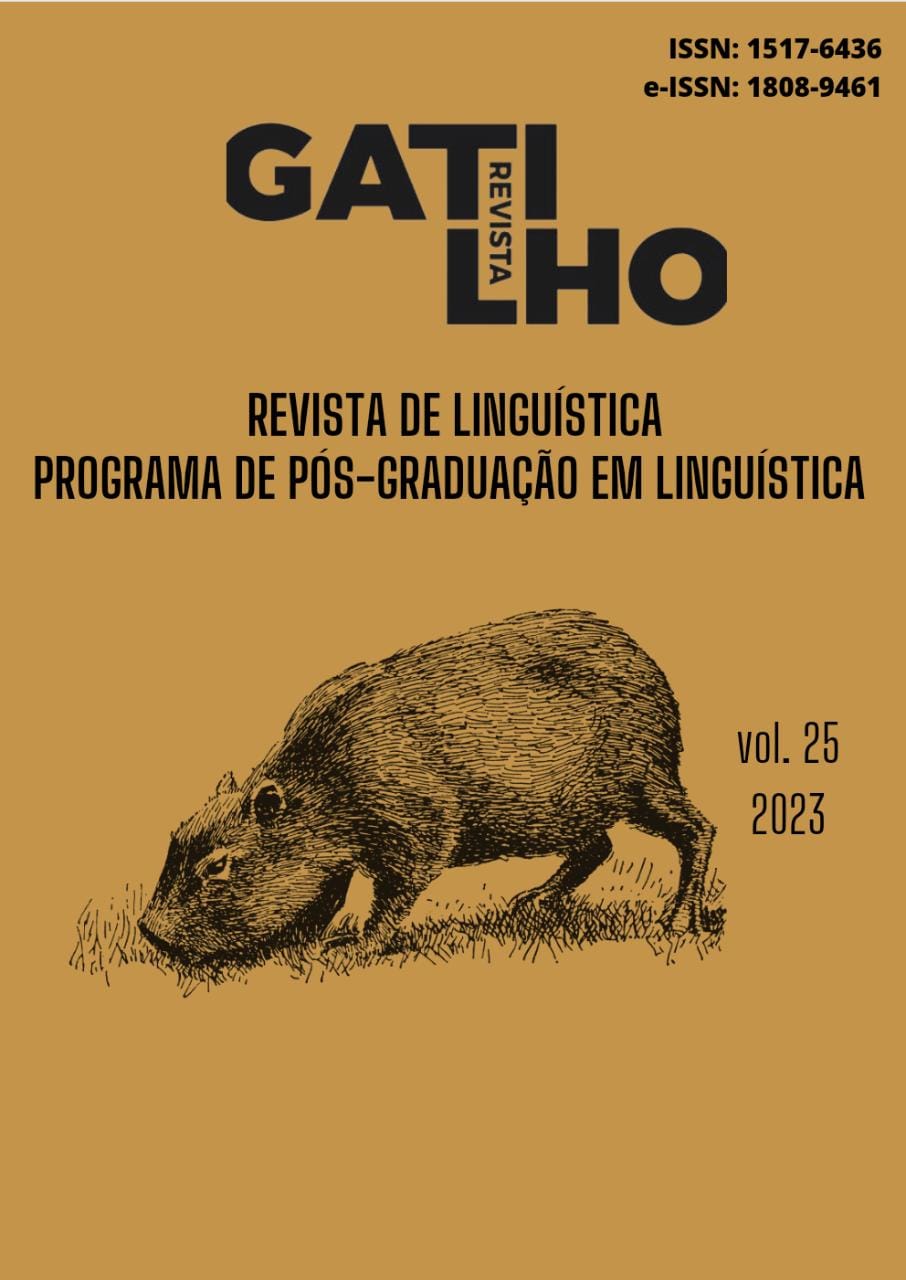Who are you talking to?
A longitudinal study on the communicative intention conveyed by questions in Infant Directed Speech.
DOI:
https://doi.org/10.34019/1808-9461.2023.v25.40017Keywords:
Language acquisition, Child directed speech, Interrogatives, Brazilian PortugueseAbstract
ABSTRACT: In many societies, adults and older children modify their speech when addressing babies, a register called Infant Directed Speech (IDS). Among the utterances produced in the IDS, questions appear in a relevant way. In this article, we seek to investigate, from a longitudinal study, what would be the communicative intention conveyed through the high index of questions directed to infants in the initial phase of the acquisition of Brazilian Portuguese. For this purpose, recordings of interactions between parents and the baby, Bibo, distributed between 4 and 12 months of age, were analyzed. Of the 462 utterances present in the 71 audios analyzed, 174 interrogatives were found, which were classified according to the communicative intention: rhetorical, semirhetorical and information-seeking questions. Data analysis revealed that the questions corresponded to 37.6% of the utterances. As for the incidence of each type of question throughout the period, rhetorical prevailed between 4 and 6 months of the baby’s life (72%), gradually changing to the semirhetorical, which corresponded to 80% of the total questions at 7 and 8 months; in the final months of the first year of life, the ISQs were more present and, along with the semirhetorical, summed 91% at 12 months. The results indicate the use of the questions by adults, initially, to engage the baby in the communicative scene, later having the function of verifying his understanding of everyday situations and of obtaining explicit information as the baby grows.





